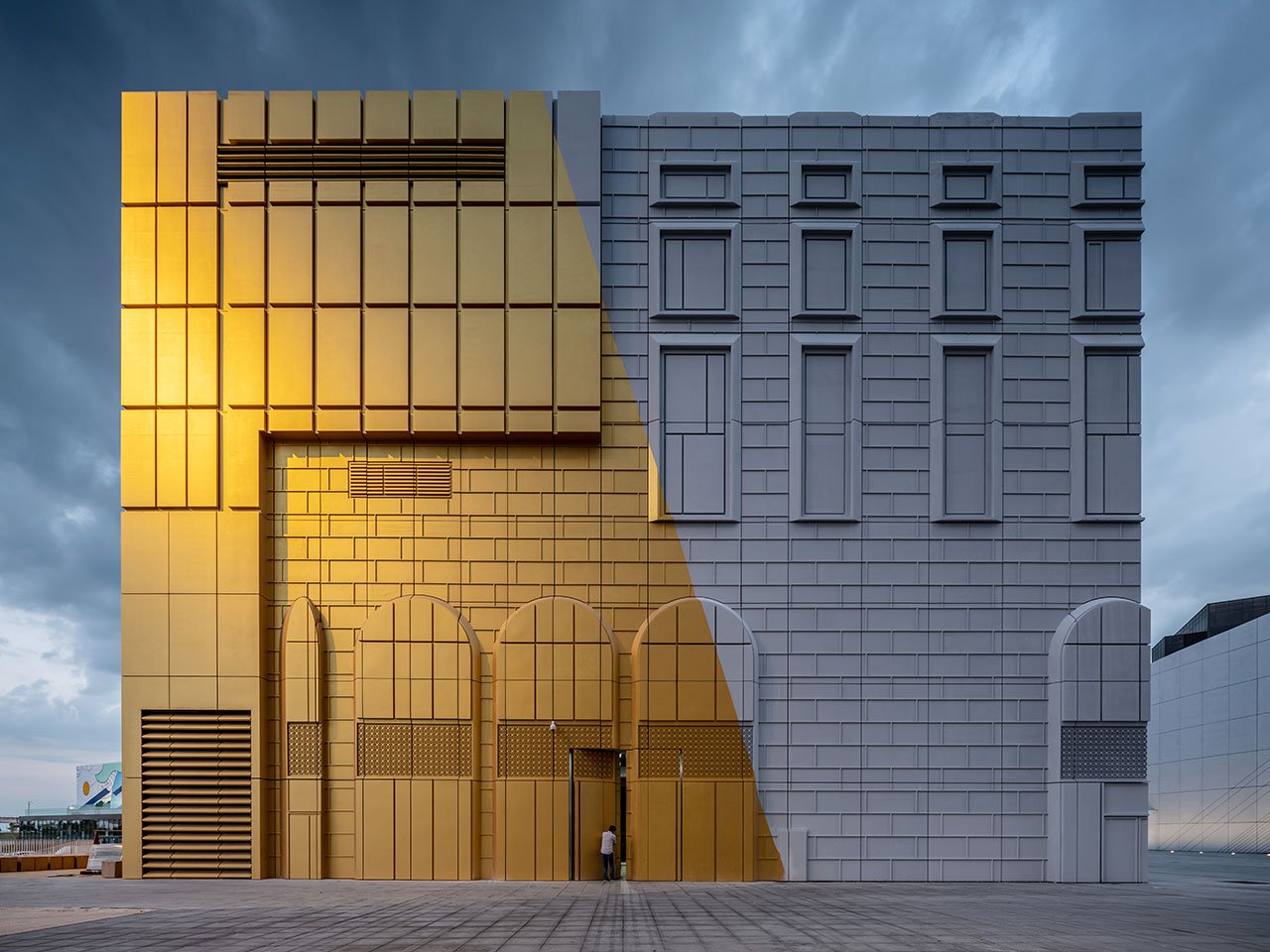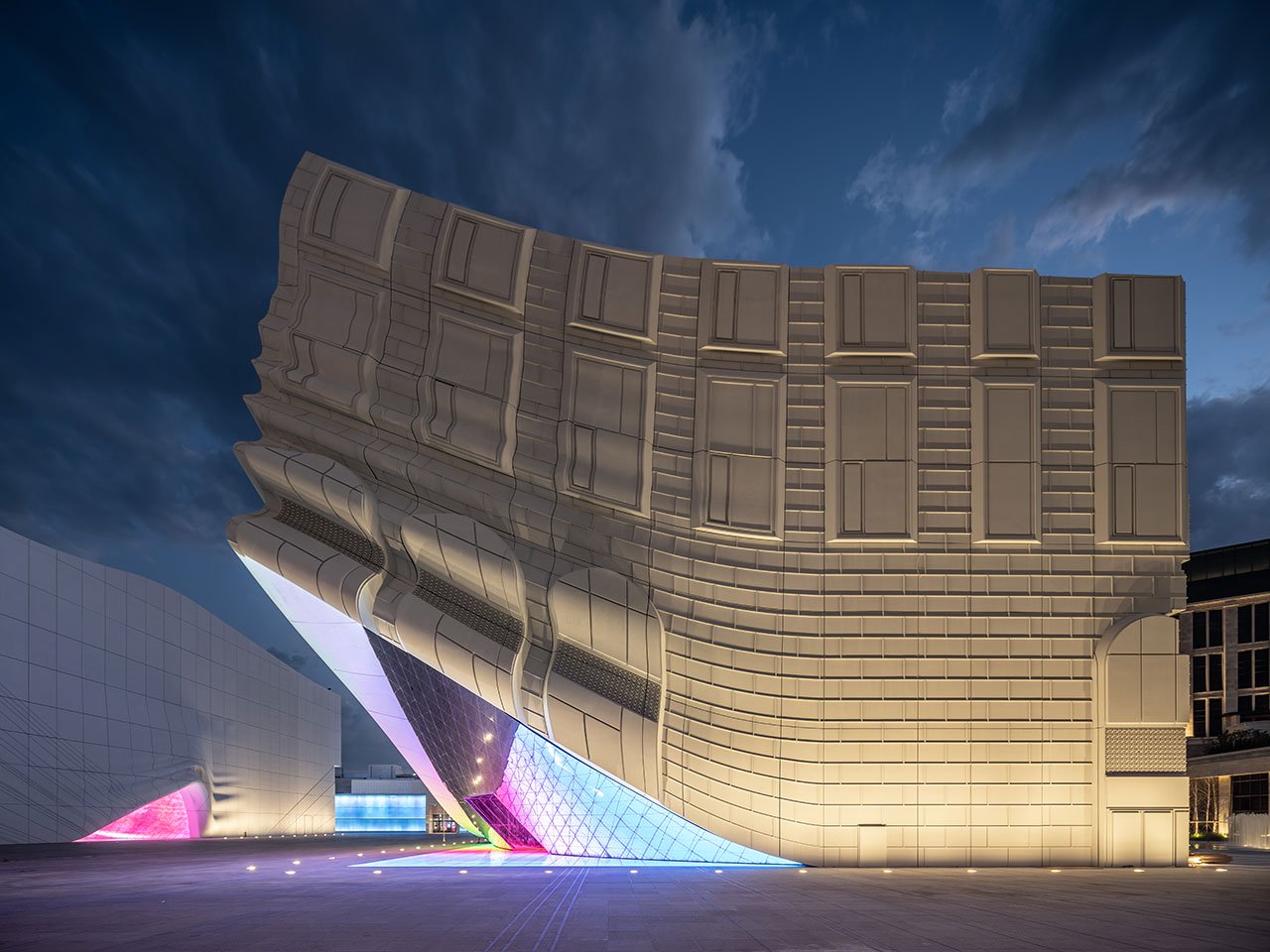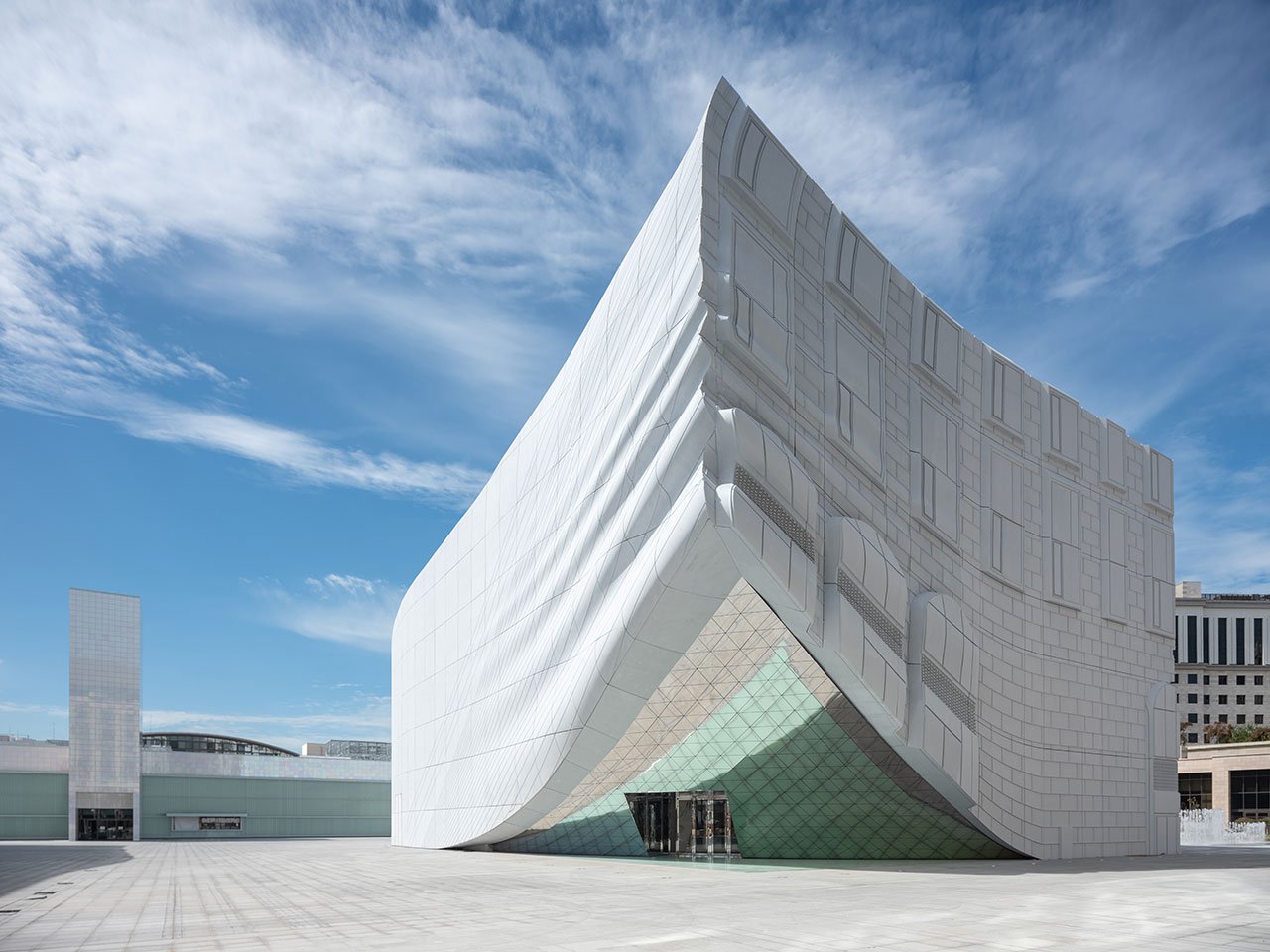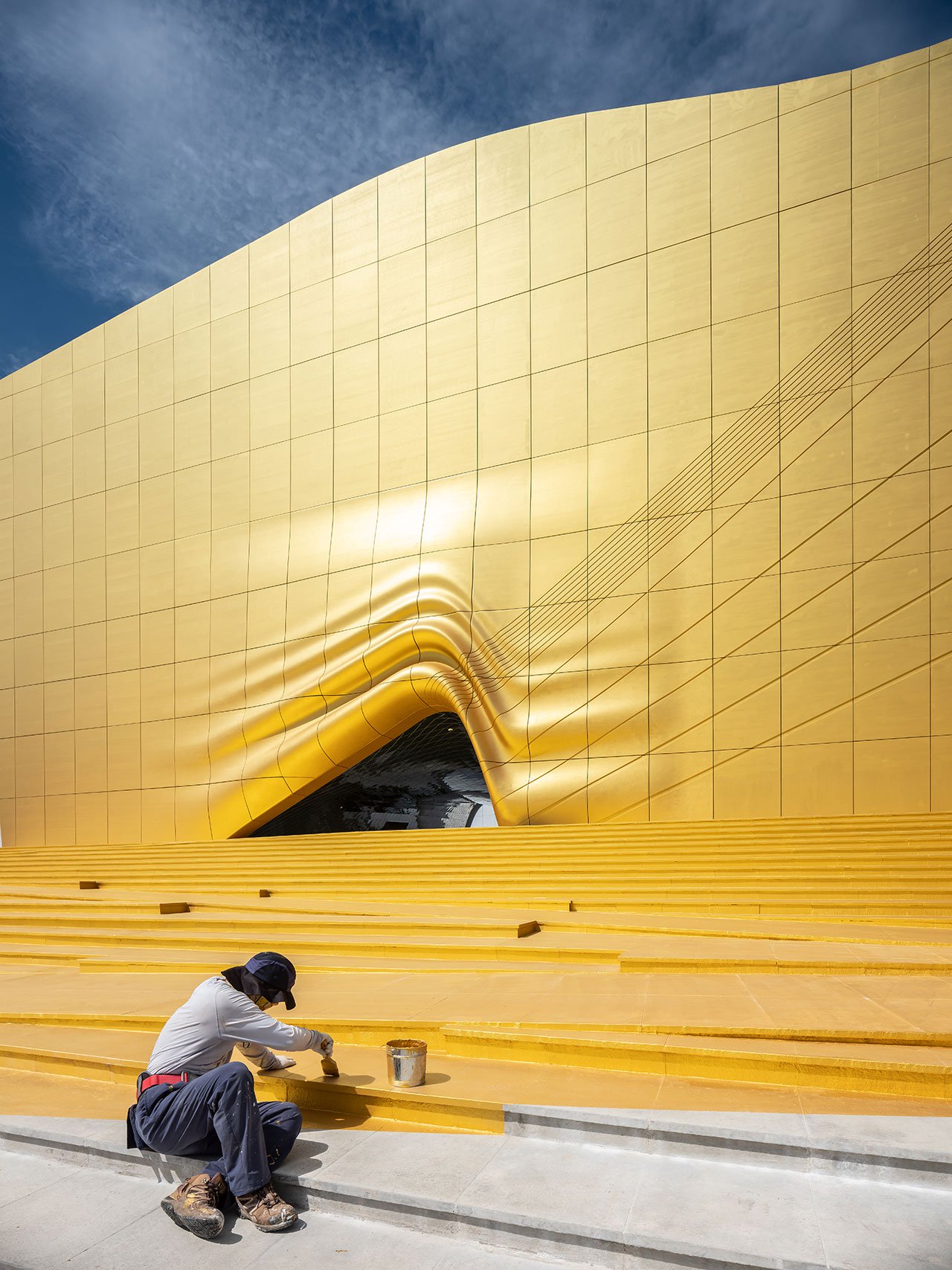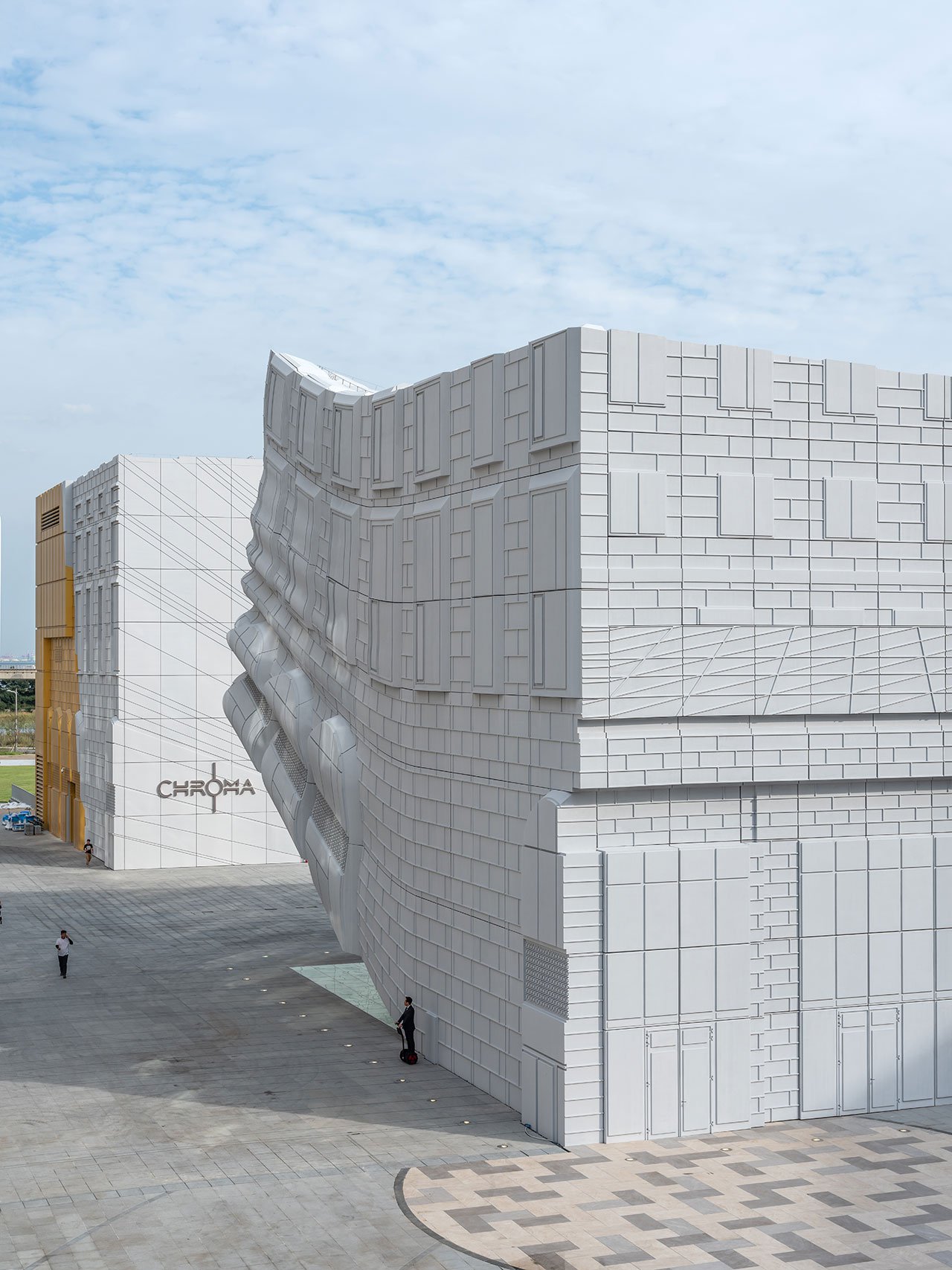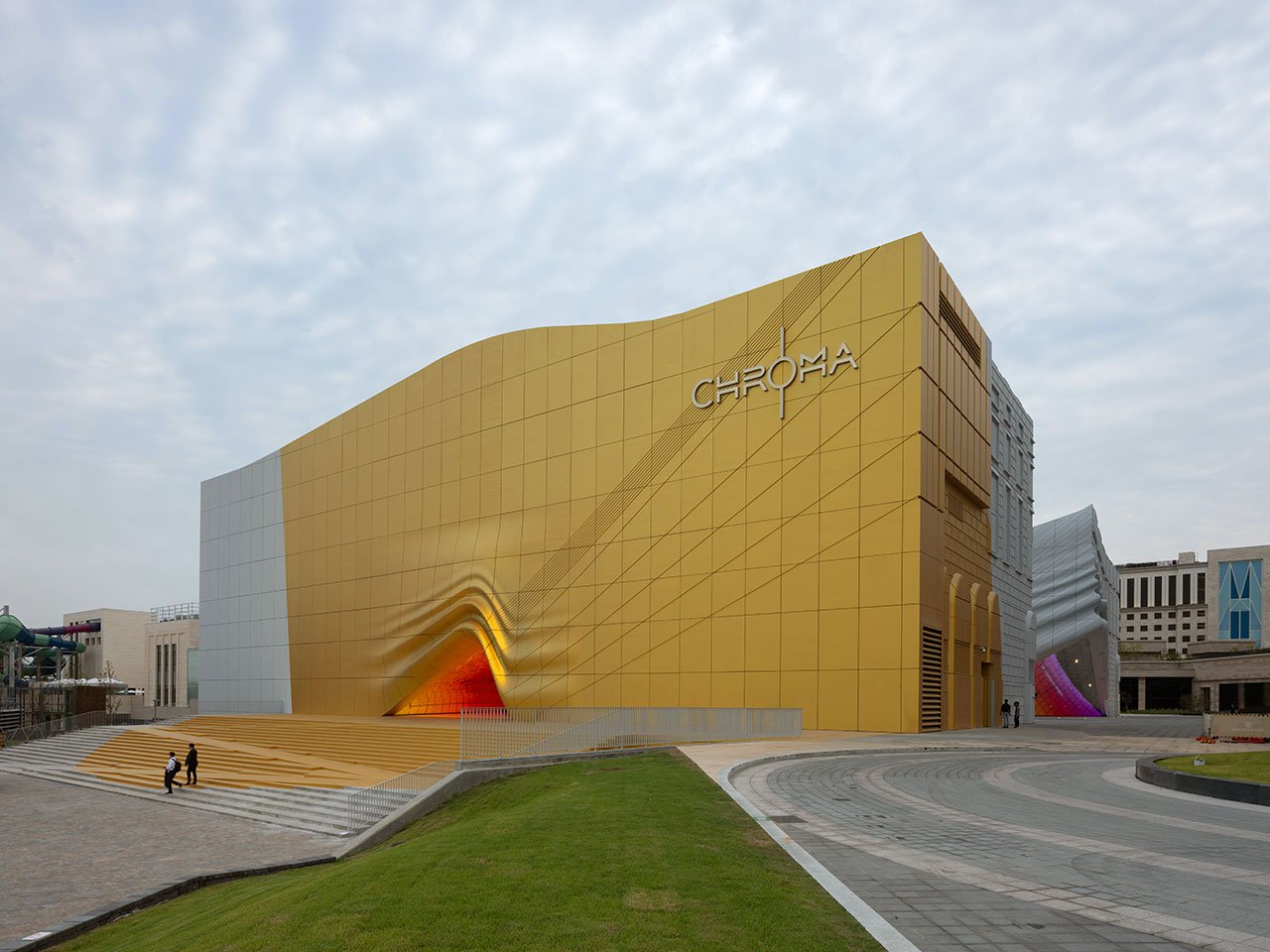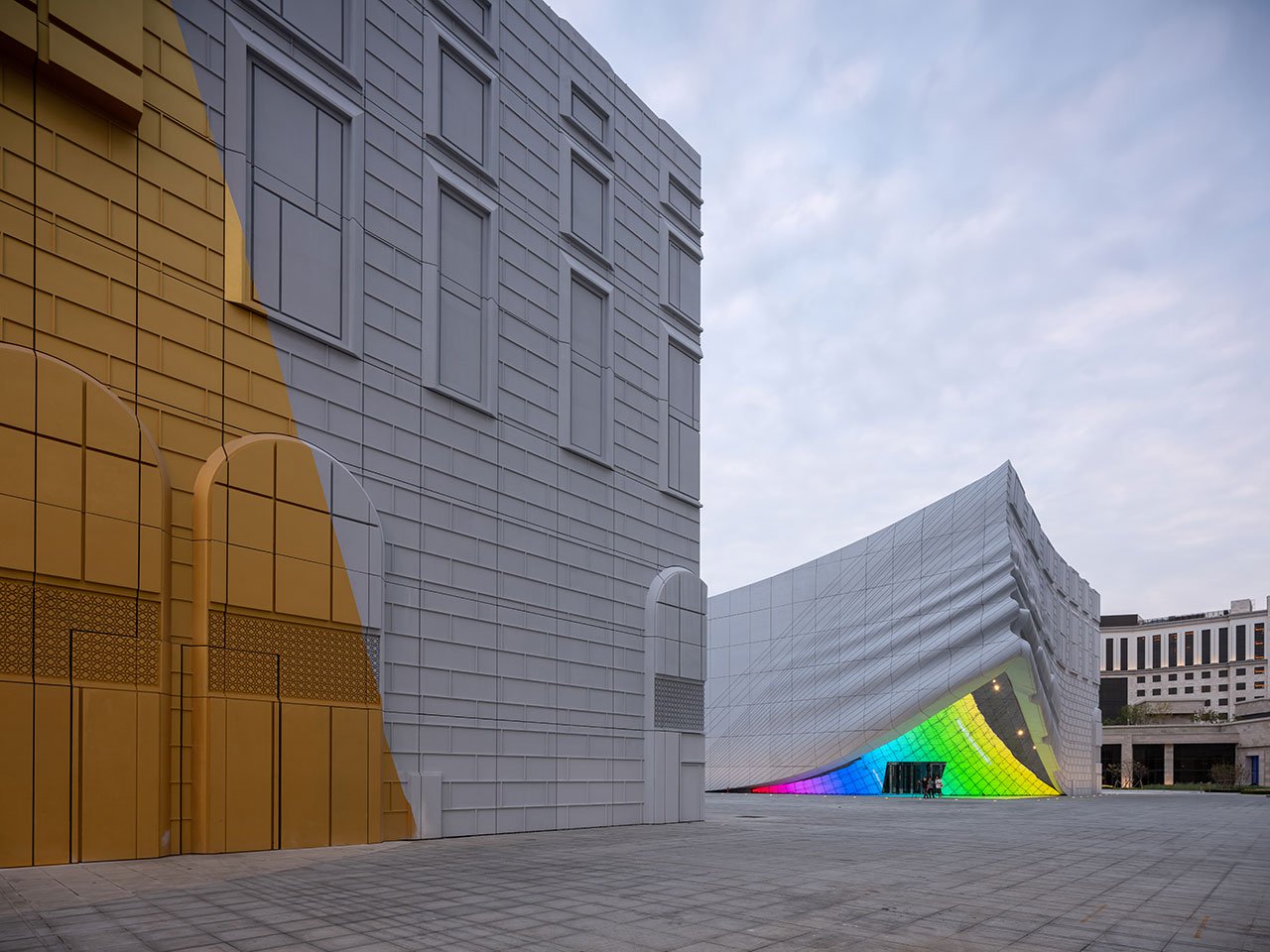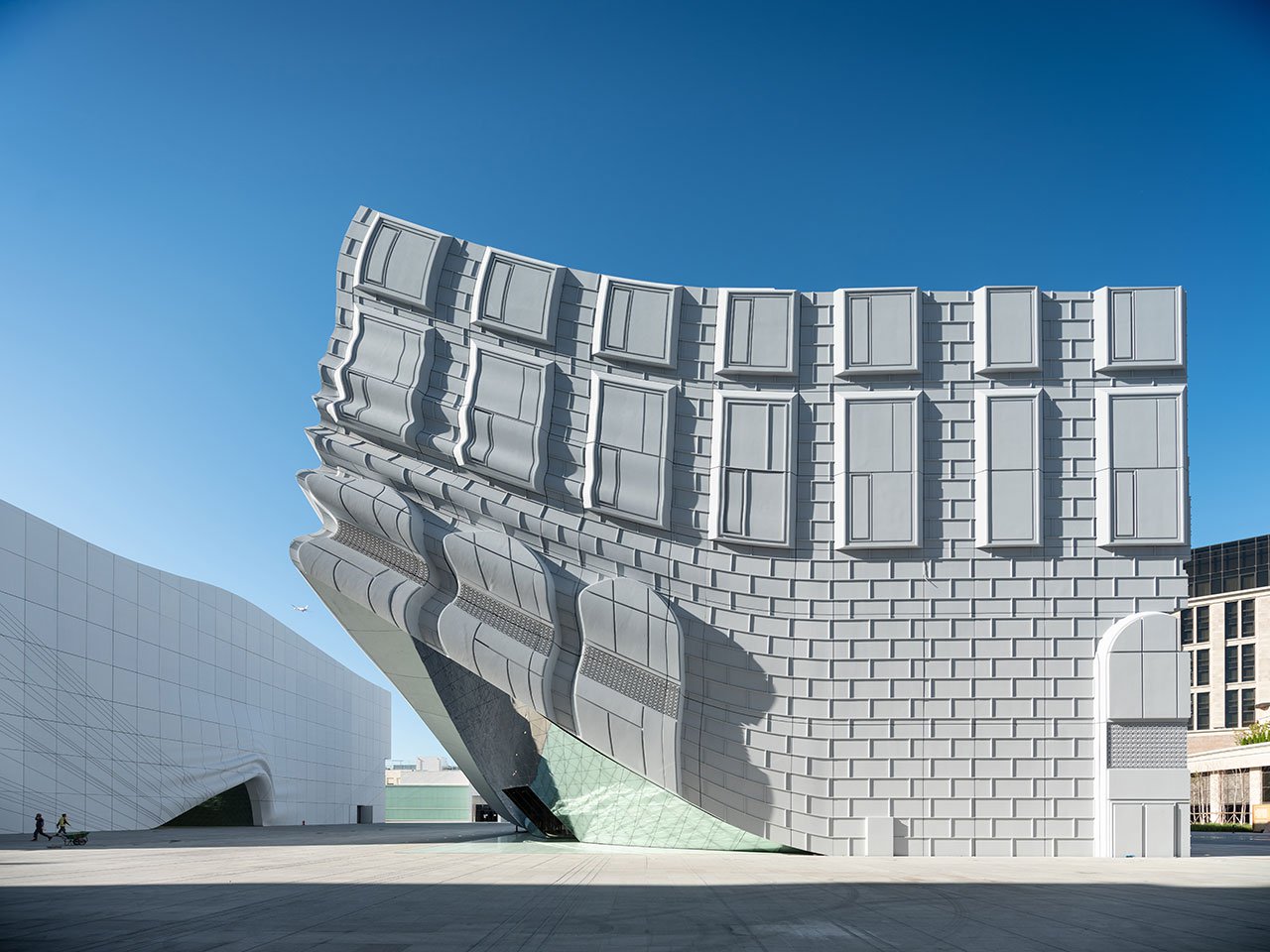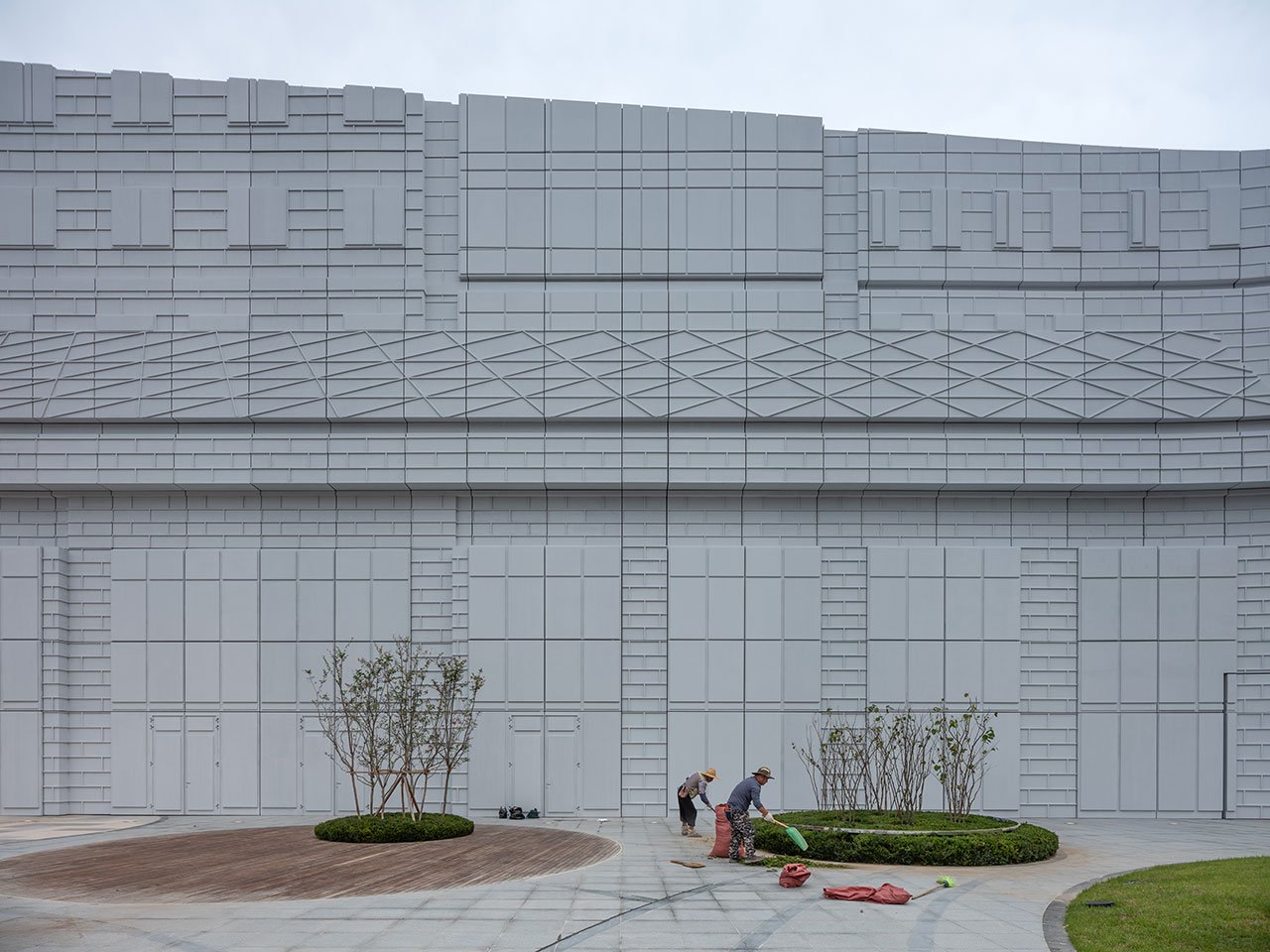In their 1972 book “Learning from Las Vegas”, architects Robert Venturi and Denise Scott Brown famously distinguished between two types of buildings, “ducks”, buildings whose form embodies their function, and “decorated sheds”, those whose external shell is autonomous of the activities inside. The Imprint, a two-building entertainment complex at Seoul’s Paradise City by Rotterdam-based architecture practice MVRDV, remarkably succeeds in straddling both categories. Both modernist in their functional simplicity and postmodernist in their whimsical swagger, the two new buildings not only defy architectural categorization but also blur the distinction between architecture and art. The Imprint is the latest addition to Paradise City, an entertainment and hotel complex comprised of 6 buildings located a kilometre away from Incheon, South Korea’s largest airport, and consists of a nightclub and an indoor theme park. The two buildings required no windows but they nevertheless had to connect with their surroundings. MVRDV’s ingenious solution was to design two simple volumes onto which they projected the facades of the neighbouring buildings, “imprinting” them in the form of relief patterns.
